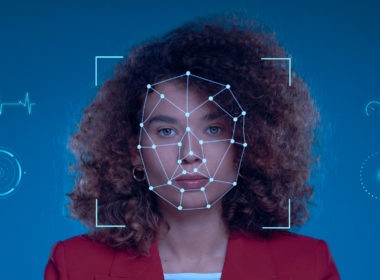Education is no longer confined to four walls, a chalkboard, and a scheduled timetable. Today, a classroom can be a screen, a keyboard, and a reliable internet connection. Digital learning has stepped beyond novelty and become a daily reality for millions. Whether you’re a grade school student attending live video classes or an adult pursuing a professional certificate from your kitchen table, technology has reshaped how and where we learn. The shift has been swift, and it’s still evolving. From flexibility and personalization to global access and cost savings, digital classrooms are opening doors in ways that traditional education never could.
Let’s explore the digital shift and the many ways in which it is transforming how we learn.
1. Accessibility and Expanding Opportunities for All
One of the most significant benefits of digital classrooms is improved accessibility. Online learning options have opened doors for students who face barriers to traditional education — be it geography, financial constraints, or personal responsibilities. A person living in a remote village can now attend university-level courses. A working parent can complete a degree after hours. Students with physical or learning disabilities can access resources tailored to their needs.
Institutions have expanded their online offerings beyond core subjects. Today, learners can choose from an impressive range of specialized programs. For instance, online speech pathology programs are now offered by accredited institutions — something that would have been nearly impossible to access for many just a decade ago. Other programs include digital marketing, game design, sustainable agriculture, and more. The flexibility of these offerings means that students can pursue unique interests without uprooting their lives or compromising on quality.
2. Personalized Learning Paths
Technology has introduced the possibility of truly personalized education. Algorithms and data analytics are now used to assess how students perform, what topics they struggle with, and where they excel. Based on this feedback, learning platforms can suggest additional resources, adjust lesson difficulty, or propose revision strategies.
Students have more control over how they study. They can pause and replay lectures, skip topics they’ve mastered, or dive deeper into subjects that fascinate them. This self-directed learning empowers students and builds skills like time management and critical thinking. Teachers, too, benefit from this model. They can see real-time data on student performance and intervene early when someone is falling behind.
3. Engaging Students Through Interactive Tools
Digital tools have brought a new level of interactivity to education. Instead of simply listening to lectures, students now participate through live polls, breakout group activities, and interactive quizzes. Educational platforms often include gamified elements — badges, points, and leaderboards — that keep students motivated.
Beyond software, hardware also plays a role. Tablets and VR headsets make abstract concepts tangible. For example, a biology student can explore a 3D model of the human heart, zooming in to understand how blood flows through each chamber. These experiences make learning more engaging and help students retain information better.
4. Cost-Efficiency and Resource Sharing
One of the most practical advantages of digital classrooms is cost efficiency. Traditional education often involves expenses related to infrastructure, printed materials, transportation, and accommodation. These costs can be substantial, particularly for students pursuing higher education in distant cities or countries. Digital learning reduces many of these financial burdens.
With online education, schools and universities can share resources at scale. A recorded lecture can be viewed by thousands of students without additional cost. Many educators use open educational resources (OER) that provide free access to high-quality textbooks, lesson plans, and multimedia content. These initiatives reduce the reliance on expensive course materials and allow institutions to allocate funds more strategically.
Students benefit from reduced commuting expenses, flexible schedules that allow them to work while studying, and access to affordable or even free courses.
5. Teacher Empowerment and New Skillsets
The digital shift hasn’t just changed how students learn, it’s also reshaped how teachers teach. Educators have had to develop new skillsets to thrive in digital environments. From mastering video conferencing software to creating engaging online assessments, the demands of teaching have evolved.
However, this shift has also empowered teachers. Many now use tools that provide real-time insights into student performance, enabling them to tailor instruction more effectively. Digital platforms allow for creative experimentation, such as incorporating video editing, podcasting, or live collaboration tools into lesson plans.
Professional development has grown in response to these needs. Many teachers participate in webinars, online certification programs, and peer learning networks. These communities support innovation and create a culture of continuous learning among educators themselves.
6. Enhancing Collaboration and Communication
There is a misconception that digital learning can be isolating. That’s not true! In fact, technology is helping students connect with peers and instructors in ways that are more immediate and dynamic than ever. Whether through live video sessions, discussion boards, or real-time chat, learners can engage in active discussions and group projects from anywhere.
This connected environment fosters a strong sense of community. Students can exchange ideas, provide feedback, and work together on shared goals, regardless of physical location. Digital learning platforms also make it easy for teachers to give timely support, answer questions, and keep the conversation going outside of scheduled class hours.
7. Opening Doors to Lifelong Learning
This is one of the best aspects of online learning; it is for everyone! Professionals are upskilling, career changers are retraining, and curious learners are diving into new subjects just because they want to. The digital classroom supports learning at every stage of life.
With flexible schedules, modular courses, and credentialed programs available online, lifelong learning is more achievable than ever. People can take short workshops, earn certifications, or even complete full degrees without interrupting their careers or personal lives. Digital classrooms are helping build a culture where continuous growth and learning are not only possible but convenient!
Technology is reshaping education in ways that were once hard to imagine. It’s making learning more flexible, inclusive, and engaging for people across the world. Whether you’re a student attending daily virtual classes, a teacher creating interactive lessons, or an adult rediscovering your passion for learning, digital classrooms are creating new possibilities.
As this transformation continues, the focus will shift from adapting to digital learning to fully embracing and optimizing it. With the right tools, support, and mindset, education can become more effective and inspiring than ever before. The digital classroom is not just the future, it’s already here, and it’s changing lives every day.












